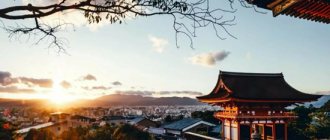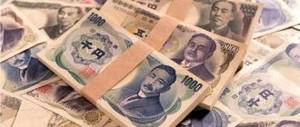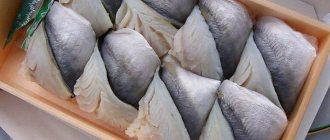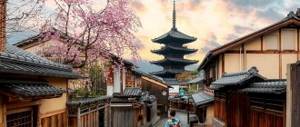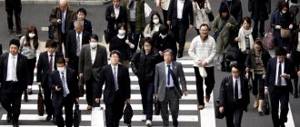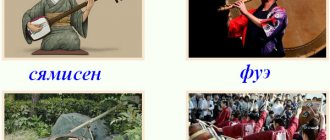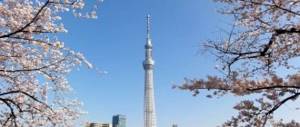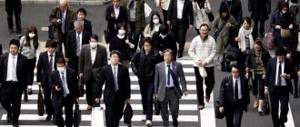In memory of Vasily Melentyevich Mendrin.
Vasily Melentyevich Mendrin was born on May 3, 1866 in Yekaterinodar, died on May 22, 1920 in Vladivostok, a major Russian orientalist. He was buried at the Pokrovskoe cemetery in Vladivostok, his grave has not survived, the scientific archive was lost, but a translation of “The History of the Shogunate in Japan” or “Nihon Gaishi” with his comments and notes remained.
"KOJIKI" AND "NIHON GAISHI"
There is practically no written data left about the ancient history of Japan. The semi-mythical works, which in Japan are called "Kojiki", mention the goddess Amatarasu - the great sun goddess. When descending from heaven to earth, the grandson of the great Goddess Amatarasu, “Ninigi no Mikoto,” became the founder of imperial power in Japan. He was sent by the goddess Amatarasu to assume eternal power over the country, which is known to us as Japan, and in ancient times was called Yamato [1, p.32]. The time of establishment of imperial power in Yamato is unknown today. It is also unknown to what time the Kojiki myths date back.
In a later period of Japanese history, part of the data was recorded and preserved to this day about the struggle of two large family families, Taira and Minamoto, for imperial power. This entry was made by the Japanese writer Rai Dze in his book “Nihon Gaishi”, which in the translation of the Russian scientist Vasily Milentyevich Mendrin means “Free History of Japan”. The Nihon Gaishi records that in the years 662-667, the struggle of three clans had a huge influence on the formation of imperial power in Japan: the Minamoto, the Taira and the Fujiwara.
Having taken the side of the Minamoto clan, the military rulers (shoguns) from the Fujiwara clan practically exterminated the Taira clan. In 1181, during the last battle between the Taira and Minamoto clans, power passed to the Minamoto clan. In 1185, the last emperor of the Taira clan, Emperor Antoku, died [1, p.171].
New research has shown that the semi-mythical data about the goddess Amatarasu and the two imperial families of Taira and Minamoto have ancient historical roots that are unknown to modern science.
These studies in the field of ancient history, based on the deciphering of the texts of the “Old Testament”, linguistic discoveries in the “proto-language”, made it possible to determine where the ancient emperors of Japan Taira and Minamoto came to the islands, as well as to find out the basis of the origin of the legend about the Goddess Amatarasu.
Story
The settlement of the Japanese islands began in the Paleolithic era. However, the state system replaced the tribal one only in the 5th century AD. It is very difficult to assess the development of the Japanese people before this time, because at that time the Japanese did not yet have a written language. The Yamato clan is considered the ancestors of the people of Japan. Some historians believe that, by analogy with the unification of other peoples, this tribe led conquests, which allowed them to subjugate other tribes. Since ancient times, China and Japan have been competitors. In the 6th century, Japanese civilization began to develop rapidly, bridging the gap in many areas. In the 7th century, thanks to thoughtful government regulation, the Japanese managed to attract many artisans and scientists from China and Korea. They also sent their children to study in neighboring countries. For a long time, Chinese remained the official language in the country. Closer to the 8th century, hiragana and katakana were formed. According to most linguists, the Chinese alphabet is still part of the Japanese alphabet and approximately 40% of the entire vocabulary is in Chinese. Dramatic changes in the Japanese state occurred at the end of the 12th century. Then ruler Yoritomo created the first shogunate. A distinctive feature of the shogunate was military regulation. All power was concentrated in the hands of military leaders. The emperor had a symbolic meaning. The 16th century marked the beginning of totalitarianism for Japan. It was forbidden to leave the country, many foreigners were expelled, missionaries were forbidden to propagate a foreign religion. The shogunate ended its existence closer to the 20th century. As a result of the revolution, the imperial regime was restored and the country became open again. Japan now has a constitutional monarchy. Power is still passed down through the male line, and the prime minister really leads the country.
Japanese people
The Japanese are an incredible and open-to-the-world people, whose character contains many distinctive features - hard work, discipline, practicality, accuracy. All this is intertwined with aesthetic features that are inherent in almost all Japanese, regardless of their location. After all, in addition to the 127 million local population , about 3 million more Japanese live in the largest countries of the world . The largest number of representatives of the Asian country live in the United States (1.2 million people), as well as in Brazil (about 1.5 million people). About 120 thousand Japanese live in Asia, approximately 90 thousand live in Canada. About 15 thousand people live in European countries. A small number of Japanese (5 thousand people) can be seen in Australia, as well as in other countries of the planet.
Japanese people
Cultural characteristics of the Japanese people
Japanese culture is extremely rich and diverse. The Japanese express a heightened feeling in almost all areas of life, including cultural traditions. Despite the fact that each region has some differences in this area, family traditions are sacredly respected here, and they attach great importance to national holidays and various rituals. One of the main distinguishing features of the Japanese is their elevated attitude towards the world around them. Only the subtle spiritual organization of the inhabitants can so poetically glorify the forces of nature in their creativity. The Japanese have no less scrupulous attitude towards flowers, which is expressed by the development of various styles of flower arrangements - ikebana, rikka, nageire, seike. The tea ceremony, founded by Sen no Rikyu, occupies a special place among the Japanese. To learn this difficult custom requires quite a long time and endurance, which the Japanese do not have to spare. An important feature of the ceremony is not only the process of drinking tea, but also the aesthetic pleasure that guests receive during the entire process. The ancient ritual takes place in specially designated rooms and represents one of the most important and meaningful national traditions.
Japanese spirituality
The Japanese people's calm attitude towards religiosity is due to the formation of several spiritual directions over the years. But still, Buddhism and Sentoism have the main influence on the way of life of the population. A large number of temples, both ancient and modern, impress with their majesty and originality. Despite the technological progress that has engulfed one of the oldest countries on the planet, people here take the observance of local rituals quite seriously. In addition to visiting Buddhist and Sento shrines, a third of the population periodically makes pilgrimages, which has a positive effect on the level of spirituality of the Japanese.
Features of national character
In addition to their adherence to national customs and love of nature, the Japanese can safely be called workaholics. This wonderful people is distinguished by a special responsibility and sense of duty, characterizing each resident as an example of a disciplined and efficient worker. In everyday life, the Japanese are characterized by such traits as politeness, goodwill, and respect for the older generation. The upbringing of children has an important influence on family relationships, which consists of teaching them to observe subordination in relation to the older generation. In this way, a sense of community and valued interests develops. First of all, this concerns a certain group, which is a prerequisite for the development of such qualities as a sense of duty and devotion to authority. In the daily life of the Japanese, friendliness and friendliness are self-evident concepts. Starting from a salesperson in a store, who will show maximum courtesy in service, to an expensive restaurant, where any client will be served with a smile, not because of high tips, but because politeness is an everyday norm among the Japanese. An equally important trait of the average Japanese is curiosity, characterized by a certain direction. This is partly due to the influence of Buddhist culture on the thinking of the population, which is distinguished by certain specifics.
Culture
The culture of Japan is extremely rich. The kimono, tea ceremony, bowing traditions, origami, and architecture are known all over the world. The tea ceremony has been known to the Japanese since ancient times. This was a purely meditative activity that involved relaxation alone or among family members. Later, the tea ceremony began to be held at meetings of representatives of various clans. A fundamentally important point of the ceremony is the conversation on strictly defined topics, for example, a discussion of art and nature. In winter, tea was drunk from cups with thick walls to avoid getting burned, and in summer the drink was poured into cups with thin walls. They often depicted landscapes, which made it easy to determine the topic of conversation. Silence was considered the most important element, so people could remain silent for a long time. Japanese parables are also an indispensable part of the culture of the people. In the legends of Ancient Japan, you can often read about great heroes who fought for their master and were ready to die, selflessly giving their lives for him. The code of honor still lives in the hearts of the Japanese, forcing them to devote themselves entirely to their work. The art of traditional Japanese printing has survived to this day, and it takes more than 10 years to study. The Japanese try to find their own approach to everything, so in parks you will see neatly trimmed tree crowns using the bonsai method, in flower salons bouquets are composed following the art of ikebana, and the writing of hieroglyphs must certainly be done in accordance with the instructions of calligraphy. The Japanese try to make everything that concerns human life beautiful. A striking example of this is kabuki, a theater that dates back to the 17th century. It is played only by men dressed in kimonos and masks. Each performance is considered unique and tells famous legends or instructive parables. Shinto mythology, which tells about gods and spirits, is considered an important element of Japanese culture. Finally, samurai found a response in the hearts of millions. This art is studied in many universities and academies, and martial arts associated with it are taught in specialized schools around the world.
Housing
Traditional housing is still common in Japan. Small houses can be found in cities and rural areas. Many Japanese try to leave traditional houses as soon as possible, since living in them is not very comfortable. Additionally, most people gravitate toward cities with apartment complexes and townhomes. A traditional Japanese house is made of wood. It has many supports as its frame, so the building is always rigid and can withstand even in the event of an earthquake. Traditional houses are not painted, but the structures are polished to ensure a pleasing appearance. The roof is usually made of tiles. It is noteworthy that all colors are rather dull, there are no bright tones. The style in which traditional houses are made is called wabi. It is characterized by detachment and some dilapidation, which allows it to create a sad charm. If possible, the Japanese will definitely acquire a courtyard, which will be surrounded by a fence. Inside the yard there may be a green corner or a small rock garden. You must enter the house without shoes. The floors are covered with tatami mats. Each traditional house includes a toilet, miniature bath and kitchen. The rooms are intended purely for sleeping and are separated by partitions. There is usually a separate room for guests. The style of the room is quite strict, rather suitable for a man. He is the head of the house, and the children and wife must obey him. The housewife's place is the kitchen, where she must cook every day. The room has several windows that open in the morning to ventilate the rooms. In traditional houses, as in modern Japanese apartments, cleanliness and order always reign. The furnishings in the apartments are not so strict, but there is also little space. The Japanese value multifunctional cabinets for storing utensils, so every modern Japanese apartment will have several of these cabinets. The living rooms or salons, as they are called in the West, familiar to Russian and Ukrainian people, are absent. The family often gathers in the kitchen.
The space in the apartment is thought out as much as possible, since Japanese society is still dominated by the ie system, the center of which is family life, directly related to the home.
Cloth
The kimono is ingrained in the European minds as an elegant garment. It is a robe with a V-shaped neckline. The kimono is wrapped around the body, secured at the back. The peculiarity of this clothing is that it is available in only one size. The difficulty with wearing a kimono is that it is quite difficult to put it on yourself. The suit includes 12 parts and needs to be adjusted according to certain rules. There are only 5 parts in a men's traditional costume. If a man or woman in Japan wants to buy a kimono, they will use the help of a professional dresser. Kimonos can vary depending on the occasion. For holidays, formal outfits are provided, and there are also home options. The cost of a traditional outfit is high: those that cost 2 thousand dollars are considered inexpensive. Handmade kimono costs more than 20 thousand dollars. In wealthy families, people wore several versions of kimono. Moreover, the wardrobe could include outfits for a tea ceremony, a gala meeting, receiving guests, or meditation. There are still factories in Japan that specialize in making kimonos, which are extremely popular.
The spirituality of the Japanese and the cultural heritage of their country are incredibly popular now. This is due to a developed sense of beauty: the Japanese do everything so that the result of their work can be admired. Even the candy packaging matters. Therefore, the Japanese people can be called the most sophisticated in every sense.
In this video you can get acquainted with the traditional dishes that the Japanese eat every day.
What are the Japanese made of?
In the previous article, the term “Russian population” and its application aroused particular interest among readers, which inspired the Genotek team to conduct a little research of their own. It will be based on our own data (customer genotypes). Follow our articles on Geektimes, results will be coming soon.
In this material we will talk about the Japanese population. Perceived by Europeans as a nation isolated from the outside world by its own cultural context and mentality, the Japanese are emphatically united in their isolation and proud of their unity. "One race, one civilization, one language and one culture." It is natural, in this case, to ask the question: are the Japanese people a historically and ethnically integral entity? If this is so, then who are these people - aliens, conquerors or original inhabitants of the Japanese archipelago? Otherwise, if this is an alloy, a merger, an aggregate of several disparate tribes, then where did they come from and where is their homeland? For a long time this question remained the subject of archaeology, ethnography and linguistics. Now population geneticists have begun to solve the problem.
It is known that a mysterious civilization from an archipelago in the Pacific Ocean was formed about 10,000 years ago. Where are the origins of the Japanese population and what does this term mean in the new Genotek material.
Educational program: stereotypes about Japan
Sakura. Haiku. Samurai. Ninja. Anime. Hiroshima. Sumo. Nintendo. Sushi (correctly - sushi). Geisha. Shintoism. Emperor. Harakiri. Land of the rising sun. Bingo! We don't know anything about Japan. The cloud of stereotypical tags does not reflect the fact that there is a demographic time bomb buried under the archipelago, which politicians are trying not to notice. On the one hand, the country does not accept unskilled labor. Most migrants in Japan are either talented students, motivated professionals, or wealthy students of Japanese language schools. Despite their cold tolerance towards “white people,” they forever remain foreigners, forced to keep up with the frantic pace of life. On the other hand, there is something that Japanese political leaders prefer not to discuss. Japan's population is aging together. People are born, but not enough of them to ensure natural population growth. At the same time, the effect of the “Japanese economic miracle” is weakening. An observer from the outside sees only the serenity and philosophical attitude to life that Japanese culture is made of. And the Japanese.
How to get to Japan without a visa
It is believed that during the Ganxi period, 40,000 years ago, the archipelago was still connected to the mainland by an isthmus, and people could migrate there. The first settlers on the island were representatives of the Jomon culture. The modern direct descendants of the Jomon culture are believed to be the Ainu. Originally hunter-gatherers, the Jomon people settled into a sedentary lifestyle and began making the pottery that gave the period its name. The word “jomon” translates to “rope mark,” a design used to decorate pottery of the time. Japanese tableware from the Jomon culture was one of the oldest ceramic finds. In other words, the territory of modern Japan was originally inhabited by people whose cultural achievements were considered advanced for that time. After the settlement of the peoples of the Jomon culture throughout the archipelago, the people of the Yayoi people came from the mainland. The description of further events represents the hypotheses of anthropologists.
Rashomon effect
There are two polar versions of what happened between the two peoples. The first development option involves the dissemination of the cultural achievements of one people in the nutrient medium of another. The Yayoi people brought flood rice cultivation, metal working, the potter's wheel and the loom from the continent. The spread of information and technology among the Jomon was tantamount to the transformation of this people. In accordance with the second option, the Yayoi completely replaced the Jomon in the archipelago, either peacefully or violently. Both hypotheses: both the Jomon transformation and the replacement by Yayoi imply a homogeneous origin - one source. A compromise between these two scenarios is the scenario of hybridization—the mixing of two peoples.
Play by role
To study the processes of population mixing, the researchers decided to compare genomic data from the Japanese with data from two other populations. It has been proven that the Ainu are direct descendants of the Jomon people. The Ainu are heroes from the East. Outwardly, they differ from the Japanese: they have deep-set almond-shaped eyes, large ears, coarse hair and a tendency to go bald, a large, slightly hooked nose, with wide nostrils. The most noticeable thing about the Ainu is their beard; in Ainu culture it was customary to grow a beard. The Yayoi people are migrants who brought bronze and iron to the archipelago. Their direct descendants, unrelated to the Jomon, are considered to be the continental peoples of East Asia. In this study, 221 Korean genomes were used in this capacity.
This vague object of study
Japanese researchers obtained an “image” of each of the three populations: they analyzed each of the available genomes not entirely, but divided them into haplotypes. A haplotype is a set of several variants (loci) located nearby in the genome. Consideration of haplotypes, rather than loci individually, provides greater opportunities in terms of determining such population events as population separation and genetic drift. As a measure of heterogeneity or similarity, multivariate statistics were calculated based on the frequencies of occurrence of certain haplotypes in each population.
The picture graphically shows three models. AIN, JPT, CHB are the names of three populations, Ainians, Japanese, Koreans, respectively. N in each case is the initial population size, and T is the mixing time.
See the past
The authors of the study tested three hypotheses for the emergence of the Japanese population: the transformation of the Jomon, the hybridization of the Jomon and Yayoi, and the displacement of the Jomon by the Yayoi people. For each hypothesis, a model was built to simulate “modern” genomes under the assumption that populations mixed according to the model. The generated data allows us to estimate the probability of obtaining the observed haplotype frequency statistics in each model (under each of the three hypotheses). To carry out the simulation, the authors of the article independently entered such parameters as the size of the initial populations, the duration of coexistence, the time of divergence of populations, and the proportion of mixing. The researchers also used Bayesian methods to estimate model parameters, such as the timing of mixing and the intensity of migration.
Oriental blend
The hypothesis of the hybridization of two peoples won by a large margin. According to the results of the simulations, it turned out to be the most plausible. It turns out that about 10,000 years ago, from west to east, the Japanese archipelago, home to an advanced civilization of that time, was settled by continental migrants who brought technology from the mainland. This mixture gave rise to the Japanese. However, the authors acknowledge that the degree of mixing may vary throughout the archipelago. However, the “Japanese population” is not only the Japanese, descendants of two ancient cultures. Ethnic diversity continues to this day.
Indigenous peoples
In addition to the Yamato people (the self-name of the Japanese people), the indigenous Japanese include the Ainu and Ryukyusans, residents of Okinawa. Both peoples belong to the Jomon branch; they lived on the islands in isolation and were not influenced by migration waves. For a long time, the Ryukyuan people had their own kingdom, their own language and their own religion. However, there was never complete sovereignty: first it was necessary to pay tribute to the emperors of the Chinese dynasties, then to China and Japan at the same time. At the end of the 17th century, the Japanese Empire annexed the Ryukyu Archipelago, thus forming Okinawa Prefecture. The Ainu are also indigenous to Japan, the Kuril Islands and Sakhalin. The combination of their external characteristics and language does not allow us to deduce their origin from any particular race. The origin of Jomon has yet to be resolved by scientists.
Untouchable caste
It is not known whether this is worth talking about in the context of population genetics, but in Japan there is also a special caste of people called the Burakumin. The paradox is that from a genetic point of view these are native Japanese, but from the Japanese point of view it is a taboo topic of conversation. However, no research has been carried out on the origin of the Burakumin; there is also an opinion that they are Chinese artisans who immigrated to Japan. Burakumin today are the descendants of people in the past associated with “unclean professions” - tanning hides, garbage removal, cleaning temples, buffoonery. Then they had the right to live in a specially designated territory and did not have the right to have relationships with people outside their caste. These people currently make up about 2% of the population of modern Japan, but they are not recognized as a population group in modern Japan. The concept of “burakumin” is translated as “resident of the village”; a person’s belonging to the burakumin can be said on the basis of archival documents. An offensive gesture is considered to be raising a hand up with four protruding fingers, as a sign that these people are “four-legged”, that is, not human. Formally, Burakumin are accepted into universities and jobs, and then anonymous persecution begins. Parents carefully check the origins of their children's chosen ones. Discrimination against the Burakumin is a subject of UN monitoring.
Population genetics reveals the past without being based on anyone's opinion or ideology. By dissecting human origins, the researcher finds out the fate of the nation, piece by piece reconstructing the history of the place. The concept of nationality becomes a convention. The origin of a person allows you to resolve the issue of your own identity and understand yourself. Now this is available to us too.
"Genealogy" is a project of the company Genotek - in which it is possible to analyze 36 ethnic groups. Among them are "Japan and Eastern China". In addition, you can find out haplogroups on the paternal and maternal lines, variants of Neanderthal genes in your genome, and find relatives in the database. Geektimes readers can use the promo code GeekGenes to get a DNA test with a 10% discount. Read us.
